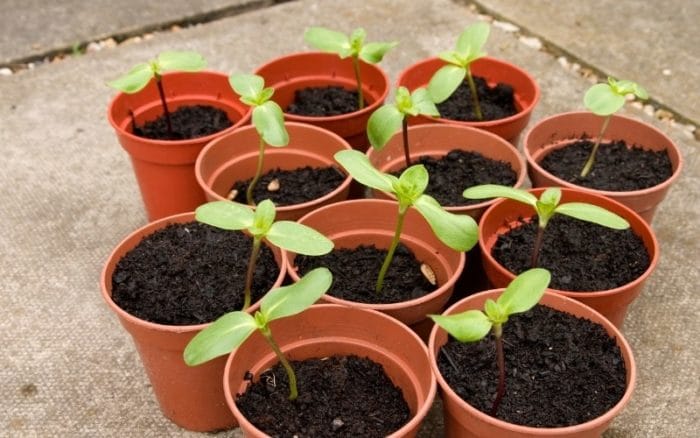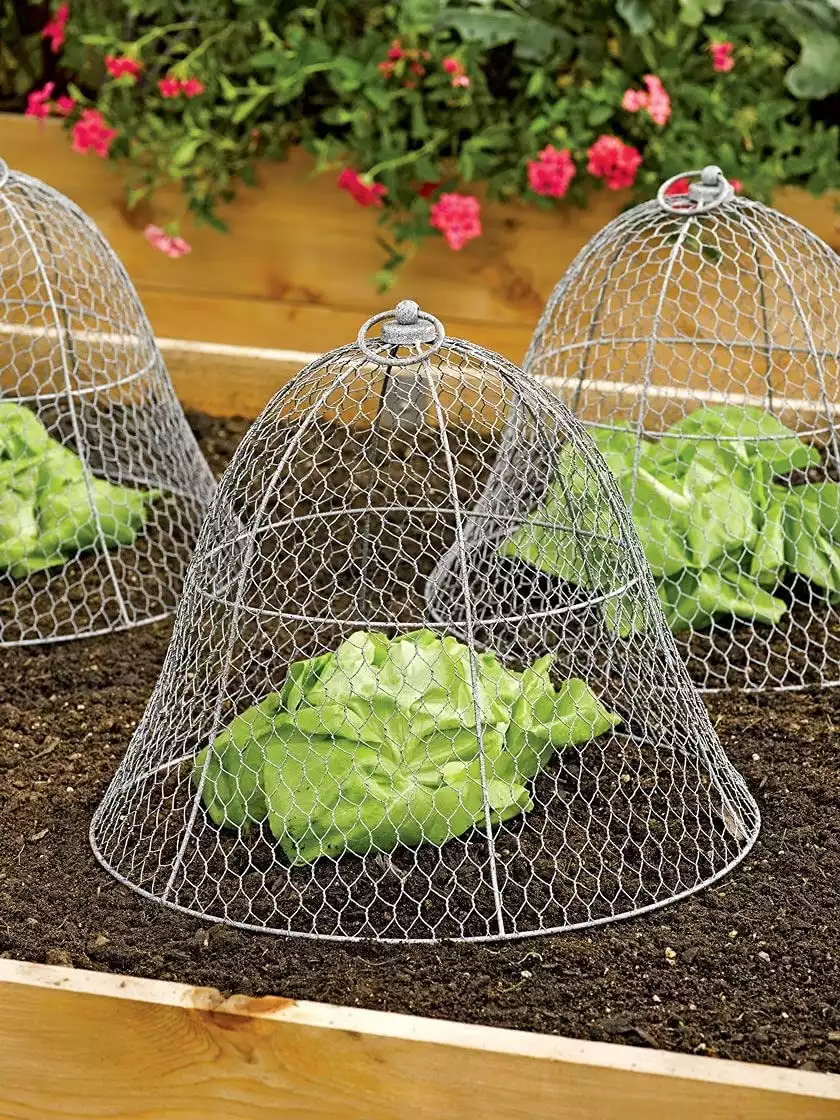We all want to get a head start on the growing season, but some things are better left to be direct-sown. Transplanting a sunflower can be tricky, and disturbing the main root can lead to transplant shock and or plant death.
Can You Transplant Sunflowers?
Yes, you can transplant sunflowers, but due to the way their roots are structured, it’s not a great idea and you’ll likely have limited success.
Alternatively, you can start sunflower seedlings inside, but make sure to transplant them soon after they sprout (less than 3-4 weeks from sowing). Once that taproot begins to form, it’s going to be near impossible to properly move them to another spot.
So, yes you can transplant really young seedlings, but I wouldn’t recommend moving a more mature sunflower. Now if you’ve already started them inside and are reading this for the first time, let’s try and get you the best chance of success.
Transplanting vs Direct Sowing Sunflowers
Transplanting sunflowers is only advised when the sprout is still young and the sunflower roots havn’t developed much. Transplanting always seems like the best option because you get to avoid pests that might dig up the tender sunflower greens, or just eat the sunflower seeds you planted in the ground.
Birds, deer, squirrels and even mice or voles are just some of the animals that eat sunflowers.
However, with sunflowers, direct sowing is always advisable as this offers the best chance of success for the survival of the sunflower plant. You will get a stronger root system and faster growth by direct sowing.
If you live in a place where the growing season is really short and you need to start them inside or else you won’t have sunflowers blooming at all, then it’s worth a shot!
Sunflower Plant Root System
Let’s talk about how the sunflower root system works, so you make sure to handle them appropriately.
The roots of a sunflower shoot off of a main stem, called a taproot.
You can think of this almost like how a carrot grows. If you damage or break that main taproot (the orange part of the carrot), your plant will not keep growing and will eventually die.
How to Start Sunflowers Indoors
So you’re going to try your hand at transplanting sunflowers, eh? You daredevil you.
You’ll want to start seeds indoors about 2-3 weeks before your last frost date. Plant the seeds around 1/2 inch deep in 3 or 4 inch pots to give them enough room to grow.
You don’t want the plants to get root bound before transplanting as this will stunt their growth.

If you not the seedling is getting very tall quickly, but is falling over because the stem isn’t thick enough, you probably need to give the plant some additional light. A grow light can be a great supplement if you’re trying to grow them near a windowsill.
When to Transplant Sunflower Seedlings
You want to transplant sunflower seedlings when they are still quite young and haven’t started developing their taproot yet. About 2-3 weeks after sowing the seeds (they should be no larger than in the image below for best results).

When & How to Direct Sow Sunflowers
You want to sow your sunflower seeds outside after your last frost date (the date your growing zone will likely no longer see temps below freezing at night) or when your soil temperatures reach around 50 degrees Fahrenheit. The date varies by hardiness zones based on where you live, but you can find your agriculture plant hardiness zones here to get a good rough estimate.
Once you know the threat of freezing temps and frost has passed, you can go ahead and sow your sunflowers seeds outside.
How Deep to Plant Sunflower Seeds & Spacing
You want to make a hole around 1/2 inch deep for your seeds and give each plant about 6 inches of space between them.
This is a rough estimate, and you can always plant more seeds initially and thin them out as you seed which seeds germinate best.
Protecting Your Seeds from Pests
Of course, almost every animal loves the taste of sunflower seeds, so keeping them in the ground might be a challenge. The most simple method for protecting your sunflower seeds is to put a barrier over them until they’re large enough to stand on their own.
You can also place human or animal hair nearby to protect the tender green stems as they grow.
Choose a Sunny Location
They are called sunflowers after all! These plants love an area that gets full sun (8 hours a day of direct sunlight) so if you want really tall and large sunflowers, make sure to choose wisely. Yes, they can grow in partial shade, but try and give them as much sun as you can.
If planting near your vegetable garden or other plants, take into consideration how their height can end up shading other plants later in the season. I’d recommend you plant sunflowers on the far south side of your garden, where they won’t block the sunlight other plants need to grow.
Water, Water, Water
Sunflowers need quite a bit of water (around an inch per week) to grow big and strong. That usually comes out to a decent spray every morning, unless it’s raining of course, then you can let Mother Nature do the watering for you.
Keep the soil moist, but not letting the plant sit in pools of water.
Can You Dig Up or Repot Mature Sunflowers?
As I mentioned above, due to the way the roots grow, it’s not advisable to replant sunflowers once they are more than 3 weeks old or 6 inches tall.
Transplanting older plants after they’ve grown too much can result in stunted growth and give you much shorter sunflowers than you were expecting.
How Deep to Plant Sunflower Plants
When transplanting sunflower plant outdoors, make sure to dig deep holes that will accommodate the entire root system. You don’t want any of the roots to be sticking out of the soil.
On the same note, you also don’t want to plant them too deep and cause the stem to rot from consistent moisture.
Growing & Transplanting Sunflowers
There are over sixty varieties of sunflowers you can grow, but most of them have a hard time being transplanted. If you let the root ball grow too large before transplanting, you will not get a large sunflower and full grown plant that is 6+ feet tall.



